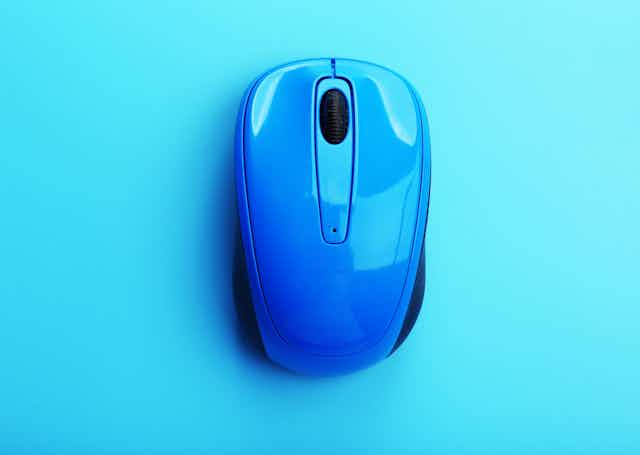To many, museums are like dinosaurs: fossilised. They call to mind Renaissance paintings, Roman sculpture, “don’t touch!” admonishments, and Indiana Jones demanding “it belongs in a museum!” But these associations won’t be true for much longer. While there will always be a Louvre and a National Portrait Gallery, today there are many more types of museum exhibits and art, thanks to the constant evolution of technology and computing.
The new age of digital art doesn’t even restrict itself to museum spaces; interactive and digital works are spreading out into online galleries, public places, and real-time performances. They can even invite you into the artwork itself, asking you to wander through it, to roll your hands over it, to touch, to play, and even to make the art yourself.
Art in the museum
Museums have always been spaces that embrace the fresh and the experimental, the avant garde of art and culture. So it’s no surprise that digital and multi-media art (in the sense of film, text, image, sound, and texture) have found homes in exhibits and installations all over the world. Notable examples include the V&A’s Decode: Digital Design exhibit in 2009-2010, which featured digital interactive pieces that were collaborations between designers and users. These works asked – even required – the museum visitor to touch, poke, prod, move through, peer into, and play in order to garner a response from the technology.
Other artworks use their museum space to immerse the interactive audience deeply into a narrative, a cause, or physical experiences (such as the visitor’s own breathing). These works invite their visitors to play, to physically interact with the digital technologies, and to cooperate in creating the final realisations of the pieces.
Some ventures outside the hallowed museum halls, turning public spaces into interactive art displays. The Shakespeare Machine, for example, reshuffles the bard’s lines in an algorithmic display in New York’s Public Theater, immersing the audience in Shakespeare’s poetic language in the lobby while actors do the same next door. Interactive installations of this sort are emerging all over the world in festivals, prizes, and fairs. They play with LEDs, speakers, conductivity, input, output, motherboards, algorithms, robots, and the viewers of the works themselves.
Art online
Even Indiana Jones’s brand of art is going digital, as curators seek to preserve, catalogue, and archive their collections using new technologies. In the UK, the Tate’s digital strategy includes an outline for creating digital versions of its collections. The aim is to take the physical museum to the realm of the virtual. Online communities such as Second Life and Minecraft are also delivering digital art, through virtual exhibits, online archives, and original digital pieces in virtual spaces.
Online platforms also provide opportunities for artists, curators and art lovers to interact and collaborate. The wildly successful Your Paintings Tagger uses site visitors – the public in general – to catalogue and crowdsource metadata for 200,000 publicly owned oil paintings, an enormous task made easy and educational via digital interfaces. Other projects, such as Wondermind, Inanimate Alice, and the National Gallery of Art’s NGAkids, seek to engage and educate through multimedia tasks in art, games, and video, whether in museums, classrooms, or on a home computer.
Mobile art
The mobile aspects of digital media are also moving art outside of museums and into public spaces via mobile devices and public displays. Art installations live inside our mobile phones and our daily environment, combining into “geo-locative” art, stories and histories. There’s Joel Cahen’s soundwalk narrative The Oneironaut for example, and Rebecca Horrox’s Snowdonia opera walk, Teffradot. These works make use of your mobile devices in the actual physical location, enhancing the visitor’s experience of the geographical space with multimedia.
Mobile apps, QR-codes, projected artwork on buildings and in public spaces, embedded RFIDs, wearable tech art, and public installations that turn ubiquitous surveillance into real-time displays all bring art into the 21st century, into our hands, and into our everyday environments. Banksy’s latest piece, for example, features a QR code that takes the viewer to a video of teargas being used in a raid on the Calais refugee camps. Mobile phones are making art part of our lives, rather than a brief Saturday outing for the express purpose of “culture”.

Creating digital art
And phones can take this one step further, transforming the art consumer and participant into artists themselves. The combination of a general frustration with rampant consumerism, poor quality consumer products, and the availability of raw materials on the cheap – from projectors to robotics to computing components – has ushered in the current “maker” culture.
Using inexpensive, open source tools that allow anyone to build small computer interfaces, such as the Arduino and Raspberry Pi systems, anyone can become a “physical computing artist”. The internet is full of tutorials, projects and examples.

No one is on their own in trying to play with these new arts tools; museums such as the Tate and the V&A hold regular digital workshops and maker sessions, often free or low-cost, to patrons. Self-made works can be posted online, featured in online galleries, and linked through virtual spaces. The line between artist and visitor is blurred in the myriad interchanges and interactivities between the work, the sourcing of the work’s data and algorithms, and the patron’s input into the work of others as well as their own creations.
What is yet to come in the open creative spaces of museums? Certainly the digital festivals and “hack sessions” will continue, and ramp up as experimentation with digital tools and physical computing gains more and more traction. Expect more digital homes, virtual worlds, and public spaces transformed into art installations. Expect the walls separating museums, art, and artists from the everyday world to break open.

